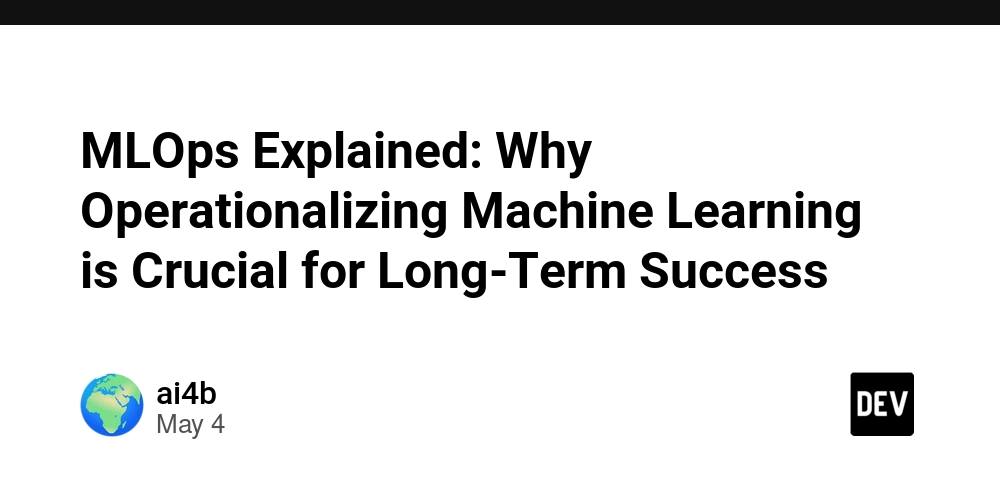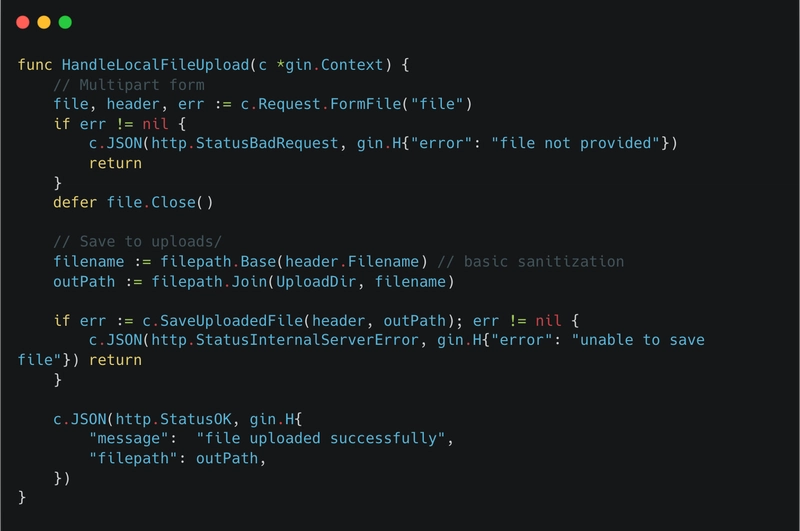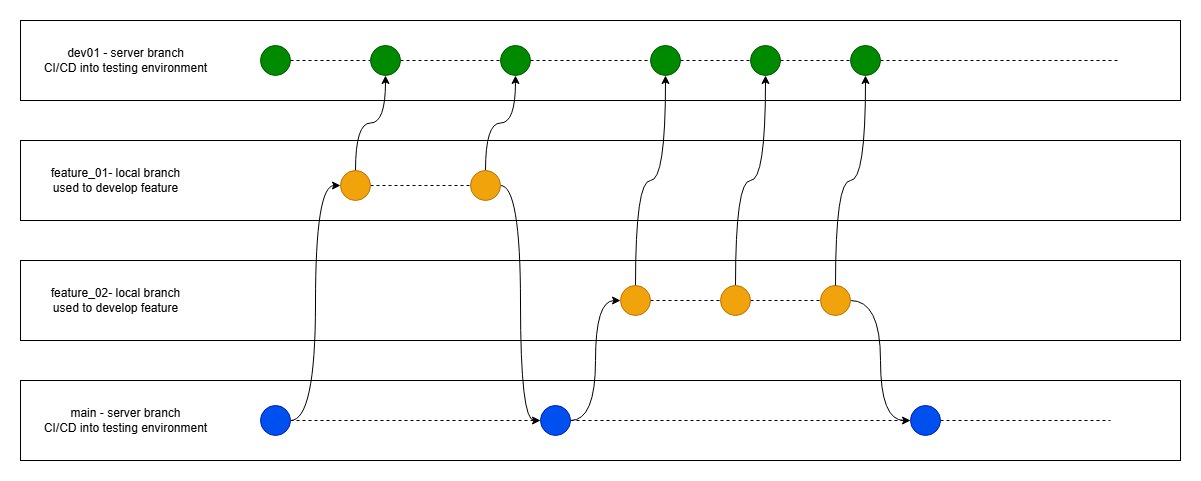My Journey into AI: Understanding the Building Blocks of Artificial Intelligence
After a career break, I started exploring ways to rebrand myself and build on what I already knew as a web developer. While playing around with ideas and using ChatGPT as a guide, the concept of building smart solutions with AI really stood out. I revisited some old AI/ML notes from 2020, did more research, and was amazed at how far the field had evolved. Over the years, I have worked on user-facing apps, backend systems, and even developer tools, but seeing tools like ChatGPT and Gemini sparked a deeper curiosity. I researched topics like Machine Learning, Deep Learning, Natural Language Processing, and Computer Vision and realized AI isn’t some far off tech, it’s already changing a lot. Now, I want to go from just using these tools to understanding and building with them, while sharing what I learn in a simple, real-time way. What is Artificial Intelligence (AI)? Artificial Intelligence (AI) refers to the simulation of human intelligence in machines that are designed to think, reason, learn, and make decisions. AI is about building systems that can perform tasks that normally require human intelligence. In simple terms, AI is a machine that mimics human. Types of Artificial Intelligence (AI) - based on capabilities: Narrow AI (Weak AI): These are specialized systems designed to perform a specific task. Some examples are: Voice assistants like Siri, ChatBots, Translators) General AI (Strong AI): These are hypothetical machines that can perform any intellectual task a human can do. It can think, reason, and make decisions like a person. This is still in research, and is yet to be achieved. Super AI : This is a future, theoretical AI that surpasses human intelligence. It is expected to outperform humans in all fields: creativity, decision-making, emotional intelligence, etc. This is purely speculative at this stage. How Does Artificial Intelligence Work Artificial Intelligence (AI) relies on data, algorithms, and computing power, basically following this steps: Data Collection: AI systems start with data, lots of it. This could be text, images, videos, audio, numbers, or even real-time input from sensors. The more relevant and clean data an AI has, the better it performs. The raw data is cleaned, labeled, and organized so the AI can understand patterns in it. This stage involves disciplines like Data Science, Data Analytics, and Data Engineering. Training: AI models are trained using Machine Learning algorithms to recognize patterns. This stage involves disciplines like Machine Learning. Inference: Once trained, the AI can make predictions, or generate outputs based on new input. Key Sub Fields of Artificial Intelligence Machine Learning: These are AI focused on enabling machines to learn from data without being explicitly programmed. Sub-branches: Supervised Learning Unsupervised Learning Reinforcement Learning Deep Learning: This is a subset of Machine Learning that uses neural networks to mimic how humans think and learn. It is mostly used in: Image recognition Speech processing Natural Language Processing Recommendation systems Natural Language Processing: This is a subset of Machine Learning (and most times Deep Learning), focused on understanding, interpreting, and generating human language. Some of its applications includes: Chatbots Translators Sentiment analysis Speech-to-text Computer Vision: This is a subset of Machine Learning (and most times Deep Learning), focused on enabling machines to interpret and understand visual data. Some of its applications includes: Facial recognition Object detection Medical imaging Some Use Cases of Artificial Intelligence Healthcare Medical imaging analysis (e.g., detecting tumors) Predicting disease outbreaks or patient risks Drug discovery and personalized medicine AI-powered virtual health assistants E-commerce & Retail Personalized product recommendations Dynamic pricing and inventory forecasting Visual search (e.g., “find similar products”) Chatbots for customer support Finance Fraud detection and prevention Credit scoring and risk analysis Algorithmic trading AI chatbots for banking assistance The use cases of AI is limitless and includes almost every field and profession. Advantages of Artificial Intelligence To automate repetitive taks To process large data quickly Smart decision making with accurate predictions 24/7 availability Challenges of Artificial Intelligence Privacy and security concerns Bias in algorithms which is based on training data Over-reliance and misuse Job displacement in some sectors Practical Tools and Frameworks for AI development Machine Learning (ML) & Deep Learning (DL) Frameworks TensorFlow: Popular open-source library by Google for building and training ML/DL models. PyTorch: Flexible and user-friendly framework by Meta. It is widely used in research and production. Keras: Hi

After a career break, I started exploring ways to rebrand myself and build on what I already knew as a web developer. While playing around with ideas and using ChatGPT as a guide, the concept of building smart solutions with AI really stood out. I revisited some old AI/ML notes from 2020, did more research, and was amazed at how far the field had evolved.
Over the years, I have worked on user-facing apps, backend systems, and even developer tools, but seeing tools like ChatGPT and Gemini sparked a deeper curiosity. I researched topics like Machine Learning, Deep Learning, Natural Language Processing, and Computer Vision and realized AI isn’t some far off tech, it’s already changing a lot. Now, I want to go from just using these tools to understanding and building with them, while sharing what I learn in a simple, real-time way.
What is Artificial Intelligence (AI)?
Artificial Intelligence (AI) refers to the simulation of human intelligence in machines that are designed to think, reason, learn, and make decisions. AI is about building systems that can perform tasks that normally require human intelligence.
In simple terms, AI is a machine that mimics human.
Types of Artificial Intelligence (AI) - based on capabilities:
- Narrow AI (Weak AI): These are specialized systems designed to perform a specific task. Some examples are: Voice assistants like Siri, ChatBots, Translators)
- General AI (Strong AI): These are hypothetical machines that can perform any intellectual task a human can do. It can think, reason, and make decisions like a person. This is still in research, and is yet to be achieved.
- Super AI : This is a future, theoretical AI that surpasses human intelligence. It is expected to outperform humans in all fields: creativity, decision-making, emotional intelligence, etc. This is purely speculative at this stage.
How Does Artificial Intelligence Work
Artificial Intelligence (AI) relies on data, algorithms, and computing power, basically following this steps:
- Data Collection: AI systems start with data, lots of it. This could be text, images, videos, audio, numbers, or even real-time input from sensors. The more relevant and clean data an AI has, the better it performs. The raw data is cleaned, labeled, and organized so the AI can understand patterns in it. This stage involves disciplines like Data Science, Data Analytics, and Data Engineering.
- Training: AI models are trained using Machine Learning algorithms to recognize patterns. This stage involves disciplines like Machine Learning.
- Inference: Once trained, the AI can make predictions, or generate outputs based on new input.
Key Sub Fields of Artificial Intelligence
- Machine Learning: These are AI focused on enabling machines to learn from data without being explicitly programmed.
Sub-branches:
- Supervised Learning
- Unsupervised Learning
- Reinforcement Learning
- Deep Learning: This is a subset of Machine Learning that uses neural networks to mimic how humans think and learn. It is mostly used in:
- Image recognition
- Speech processing
- Natural Language Processing
- Recommendation systems
- Natural Language Processing: This is a subset of Machine Learning (and most times Deep Learning), focused on understanding, interpreting, and generating human language. Some of its applications includes:
- Chatbots
- Translators
- Sentiment analysis
- Speech-to-text
- Computer Vision: This is a subset of Machine Learning (and most times Deep Learning), focused on enabling machines to interpret and understand visual data. Some of its applications includes:
- Facial recognition
- Object detection
- Medical imaging
Some Use Cases of Artificial Intelligence
- Healthcare
- Medical imaging analysis (e.g., detecting tumors)
- Predicting disease outbreaks or patient risks
- Drug discovery and personalized medicine
- AI-powered virtual health assistants
- E-commerce & Retail
- Personalized product recommendations
- Dynamic pricing and inventory forecasting
- Visual search (e.g., “find similar products”)
- Chatbots for customer support
- Finance
- Fraud detection and prevention
- Credit scoring and risk analysis
- Algorithmic trading
- AI chatbots for banking assistance
The use cases of AI is limitless and includes almost every field and profession.
Advantages of Artificial Intelligence
- To automate repetitive taks
- To process large data quickly
- Smart decision making with accurate predictions
- 24/7 availability
Challenges of Artificial Intelligence
- Privacy and security concerns
- Bias in algorithms which is based on training data
- Over-reliance and misuse
- Job displacement in some sectors
Practical Tools and Frameworks for AI development
-
Machine Learning (ML) & Deep Learning (DL) Frameworks
-
TensorFlow: Popular open-source library by Google for building and training ML/DL models. -
PyTorch: Flexible and user-friendly framework by Meta. It is widely used in research and production. -
Keras: High-level API that runs on top of TensorFlow which is great for beginners. -
Scikit-Learn: Ideal for classical ML (e.g., regression, classification, clustering).
-
-
Natural Language Processing (NLP)
-
spaCy: Fast NLP library for tokenization, parsing, NER (Named Entity Recognition — a NLP task where the goal is to identify and classify key information, called "entities" in text into predefined categories), and more. -
NLTK: Great for learning and prototyping basic NLP concepts. -
Hugging Face Transformers: Powerful library for using pre-trained language models (like BERT, GPT).
-
-
Computer Vision
-
OpenCV: A powerful open-source toolkit for real-time image and video processing. -
Detectron2: Facebook’s library for object detection and segmentation. -
YOLO(You Only Look Once): Popular real-time object detection framework.
-
-
Cloud-Based AI Platforms
-
Google Cloud AI Platform: Tools for training, deploying, and managing ML models. -
Amazon SageMaker: End-to-end ML service for model building and deployment. -
Microsoft Azure ML: Cloud service for building, training, and deploying ML models.
-
-
Development and Experimentation Tools
-
Jupyter Notebooks: Interactive coding environment for testing and documenting ML experiments. -
Google Colab: Cloud-hosted Jupyter notebooks with free GPU access. -
WeightsandBiases,MLflow: Tools for tracking experiments, hyperparameters, and model versions.
-
-
Data Preparation and Visualization
-
Pandas: For data manipulation and analysis. -
NumPy: Core numerical computing library. -
Matplotlib,Seaborn: For creating plots and visualizing data patterns.
-
Example Workflow of Image Recognition Project
- Define the problem: To classify images of cats and dogs
- Collect the data: Download thousands of labeled cat and dogs images
- Process the data: Resize the images and normalize pixel values
- Choose a model: Here you choose a machine learning or deep learning algorithm that suits the problem (detailed post on ML coming soon). For this problem, Convolutional Neural Network (CNN) works fine.
- Train the model: Train the CNN on 80% of the data
- Evaluate the model: Test model on remaining 20% of data and check for accuracy.
- Optimize the model: You can change the hyperparameters or model to check for higher score
- Deploy the model: Build a web application where users can upload an image, and the AI will predict if it's a cat or dog. Deploy to platforms of choice - Cloud Providers (AWS), Vercel, Render, etc.
- Monitor and improve: Monitor application to see how well it performs
Summary
Artificial Intelligence (AI) is a broad field made up of different techniques. Some systems follow rules, while others learn from data, and this is where Machine Learning comes in. The goal is intelligent automation, that is, machines that adapt and act on their own. From chatbots to spam filters, AI is already part of our daily lives.
Thank you for reading through.





































































































































































![[The AI Show Episode 145]: OpenAI Releases o3 and o4-mini, AI Is Causing “Quiet Layoffs,” Executive Order on Youth AI Education & GPT-4o’s Controversial Update](https://www.marketingaiinstitute.com/hubfs/ep%20145%20cover.png)




























































































































![[DEALS] Microsoft 365: 1-Year Subscription (Family/Up to 6 Users) (23% off) & Other Deals Up To 98% Off – Offers End Soon!](https://www.javacodegeeks.com/wp-content/uploads/2012/12/jcg-logo.jpg)




![From Art School Drop-out to Microsoft Engineer with Shashi Lo [Podcast #170]](https://cdn.hashnode.com/res/hashnode/image/upload/v1746203291209/439bf16b-c820-4fe8-b69e-94d80533b2df.png?#)









































































































(1).jpg?#)































_Inge_Johnsson-Alamy.jpg?width=1280&auto=webp&quality=80&disable=upscale#)



















































































































![New Apple iPad mini 7 On Sale for $399! [Lowest Price Ever]](https://www.iclarified.com/images/news/96096/96096/96096-640.jpg)
![Apple to Split iPhone Launches Across Fall and Spring in Major Shakeup [Report]](https://www.iclarified.com/images/news/97211/97211/97211-640.jpg)
![Apple to Move Camera to Top Left, Hide Face ID Under Display in iPhone 18 Pro Redesign [Report]](https://www.iclarified.com/images/news/97212/97212/97212-640.jpg)
![Apple Developing Battery Case for iPhone 17 Air Amid Battery Life Concerns [Report]](https://www.iclarified.com/images/news/97208/97208/97208-640.jpg)
































































































